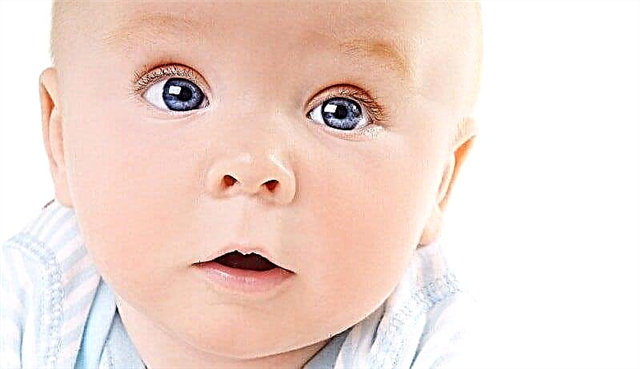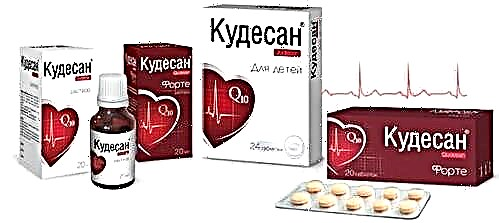
Women who have recently become mothers are very sensitive to their diet. The set of substances that they "eat" passes into breast milk and can negatively affect the condition of the newborn. Therefore, the question of whether it is possible for nursing mothers to eat seaweed often arises, since this product is one of those actively affecting the body. In this article we will try to answer it.
About kelp
Scientists call sea kale kelp. The general name covers a large number of types of brown algae, which have taken their rightful place in cooking, medicine, and cosmetology. Seaweed grows at a certain depth not far from the shores of the Japan, Barents, Kartsevo and Okhotsk seas.

During a storm, algae in large quantities is thrown ashore, where they are collected by the purveyors. The composition of the product has no analogues. Laminaria are rich in iodine, which is necessary for the normal functioning of the thyroid gland and metabolic processes.
They contain ash, iron and calcium, magnesium, sodium, as well as vitamin A, B vitamins, PP and C vitamins in rather high concentrations.
In addition to all this, kelp have the unique property of absorbing a large amount of various liquids, increasing their volume several times. This property is used in obstetrics - sticks of dried kelp are inserted into the cervix before childbirth for better disclosure. The same property normalizes the intestines when eating kelp.
Breastfeeding seaweed is one of the few foods allowed for maternal nutrition as soon as possible after the birth of a child.

Benefits for HV
After giving birth, the mother of the newborn has to deal with a number of delicate difficulties, including constipation. Pushing is difficult and scary, and it is impossible to allow intestinal overflow with feces, so as not to interfere with the successful restoration of the uterus and maintaining good health. A seaweed salad will help prevent constipation. Dietary fibers of algae swell in the intestines and cause stimulation of the mucous membranes, which eliminates the bloating and the formation of intestinal gases, improves peristalsis and prevents constipation - the intestines work like a clock.
Iodine helps to improve the endocrine background, and also takes care of the condition of the blood vessels. Lecithin in the product promotes the elimination of toxins, which is very important for breastfeeding.
Childbirth is always associated with blood loss, iron helps to fill the lack of hemoglobin, which is quite abundant in kelp. In ancient China, doctors offered seaweed to women who gave birth to improve the quality and increase the amount of breast milk. Increasing the amount of milk with the help of kelp is a rather dubious event, but its quality is definitely getting better.


The benefits of eating seaweed while breastfeeding can be very versatile:
- magnesium normalizes the state of the nervous system;
- vitamin A improves brain function, has a positive effect on skin condition, and improves memory and vision;
- essential amino acids in seaweed improve intracellular protein synthesis;
- calcium allows you to restore balance in the body, to make up for the lack of this element, which is characteristic of all women after childbirth, thereby improving the appearance and health of teeth, nails and hair.
In children, seaweed in the mother's diet usually does not cause an allergic reaction. Of course, provided that the woman does not violate the recommendations on the daily amount of the product. A nursing mother can eat no more than 100 grams of seaweed per day. Excessive use of it can lead to an overdose of iodine, and also negatively affect the well-being of the baby.

Who is not recommended?
During lactation, seaweed is not recommended to be eaten by nursing mothers who are themselves allergic to seafood. Even if there was a history of such an allergy, but in recent years it has not manifested itself, it is better not to risk it and not to provoke immunity weakened by childbirth. The same prohibition applies to women who are severely allergic to iodine.
The product becomes undesirable for young mothers with exacerbated hemorrhoids after childbirth - until the symptoms of this unpleasant ailment are removed, it is better not to use a product that irritates the intestinal walls. With an exacerbation of gastritis, pancreatitis, you should also not eat kelp. Chronic kidney disease is another contraindication for eating seaweed during breastfeeding. In case of malfunction of the thyroid gland, excessive synthesis of thyroid-stimulating hormones, seaweed rich in iodine can be dangerous to a woman's health.
Finally, absolutely any nursing mother is contraindicated in seaweed if it has an incomprehensible or dangerous origin. Kelp absorb almost all the harmful substances they come into contact with in liquid media. Therefore, in addition to minerals and vitamins, seaweed may contain a lot of chemicals or radioactive substances if the cabbage was collected in places with an unfavorable environmental situation, in places of bottling of oil products and radiation emissions. Therefore, when choosing a product, it is important to take care to establish the place of collection.


Dates of entering the diet
Do not eat seaweed immediately after giving birth. The fact is that the baby's digestive tract in the first three months of life goes through a kind of "debugging", and due to the lack of a wide variety of enzymes in the child's body, he is simply not ready to accept substances from the composition of kelp.
When the baby is three months old, the woman can make adjustments to her diet and add this product if she likes it. You need to start with small portions - no more than 30 grams of product per day. If the child does not show any negative reaction to the mother's new dish, then you can gradually increase the portion of seaweed to 50 grams, and then to 100 grams per day.

In what form is it?
A woman can buy seaweed in Russia in three types. Frozen and dried algae are considered optimal for nursing because they are free of chemicals and food additives. The frozen product must first be taken out of the freezer, thawed and rinsed thoroughly with water. Dried kelp is poured with clean water and infused for at least 12-14 hours, after which it is washed and cooked.
Cabbage can be used for salad, for addition to garnish, as an ingredient for fish soup.
Store-bought seaweed salads are high in vinegar, sugar and preservatives. Pickled seaweed contains preservatives, and sometimes flavor enhancers, and therefore, in such variants, it is better not to eat the product for a nursing woman. Preservatives, marinade, vinegar spoil the taste of breast milk, the baby will not like them, moreover, such a set of substances is unsafe for his health.


How to choose
In order not to be mistaken in choosing a healthy and tasty product, you need to remember that the place of collection and preparation of the product is always indicated in the quality certificate for the product. Feel free to ask a salesperson in a store or market for it. If the collection point is indicated in Japan or the coast of the Barents Sea, you should not buy kelp. The Japanese coast has not yet recovered after the terrible accident at the Fukushima-1 nuclear power plant, and therefore the content of radioactive substances in seaweed may be exceeded. The Barents Sea is heavily polluted; doctors and ecologists also do not recommend eating algae from there.
Far Eastern kelp and seaweed harvested in China can be considered the best choice. Pay attention to the packaging, it must be transparent, algae must be visible through it. Read the composition - it should not contain E 220 and E 621 additives. The color of the cabbage should be natural with no yellow spots. It should not be chopped too coarsely or too finely.
At home, test for authenticity and naturalness. Add some potato starch to the cabbage. If the product turns blue, then it is natural. If the color does not change, in front of you is not real seaweed, but a fake, which is better not to be eaten when breastfeeding.

In the next video, Dr. Komarovsky will tell you how a woman who is breastfeeding a child can make her life as easy as possible, while not harming the baby.



